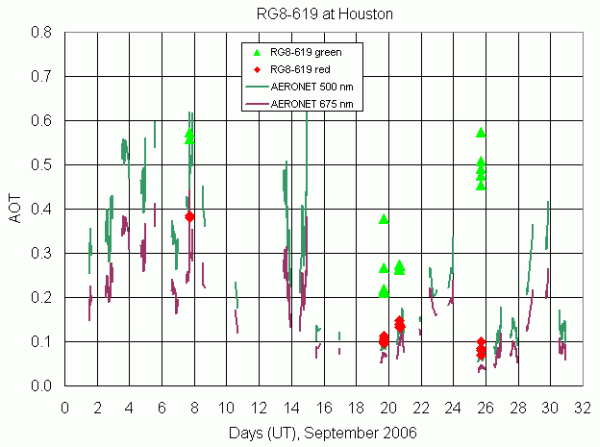
This Web page is provided for the benefit of participants in the workshop held at the University of Houston in August, 2006, under the sponsorship of NOAA and the University of Houston. For questions and/or comments, please contact David Brooks.
| School | Contact | Latitude | Longitude |
|---|---|---|---|
| Bellaire High School | Ann Linsley | 29.717 | -95.353 |
| The Chinquapin School | Brian Lamore | 29.82 | -95.02 |
| Our Lady of Fatima School | Barbara Brehmer | 29.738693 | -95.238925 |
| Paul Revere Middle School | Cathi Jack | 29.748342 | -95.560489 |
| University of Houston, Moody Tower (AERONET site) | Barry Lefer | 29.7177 | -95.3416 |
| Serial Number | V0,green | V0,red |
|---|---|---|
| RG8-612 | 1.1004 | 2.1974 |
| RG8-619 | 1.8361 | 2.1110 |
| RG8-620 | 1.7667 | 1.2206 |
| RG8-621 | 1.9905 | 1.6350 |
| RG8-622 | 1.9419 | 1.4537 |
| RG8-623 | 2.5951 | 1.0707 |
| RG8-624 | 1.9019 | 1.9212 |
| RG8-625 | 2.3944 | 1.6144 |
Link to instructions for viewing and downloading AERONET data:
Link to sun photometer training PowerPoint file.
Barbara Brehmer has recently told me about the simple particulate sampler she is using with her students -- just
an index card smeared with petroleum jelly. This is a very useful supplement to sun photometer measurements,
and should help maintain your students' interest when the weather isn't cooperating. I have provided
some additional thoughts about making a particle collector, here.
These results are provided by Barbara Brehmer, with the same ozone corrections. I have eliminated some data where there were obvious reporting problems. The data on 7 September are in excellent agreement with AERONET.
These data are provided by Brian Lamore. They sometimes track very nicely the limited AERONET data available starting on the 19th. The very tightly clustered AOT values indicate both good technique and appropriate viewing conditions, with no clouds moving around the sun. Because of the apparent quality of these handheld data, the AOT differences with AERONET on September 23, 25 (major disagreement!), and 30 should be investigated further. These data may indicate significant real differences on a relatively small spatial scale, which is exactly what this project is looking for.
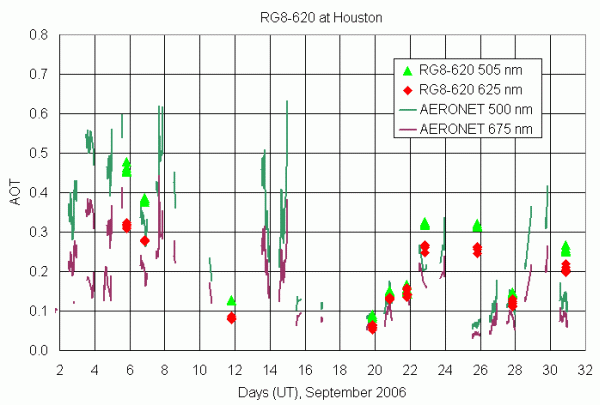 |
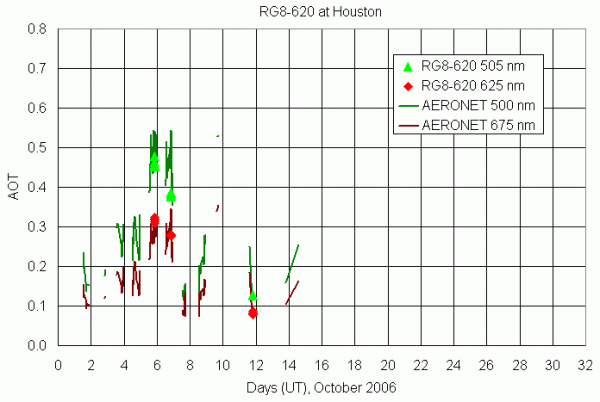 |
 |
These data are provided by Ann Linsley-Kennedy In some cases the agreement is quite reasonable, but in other cases there is too much "scatter" in the handheld sun photometer data. It may be possible to apply some more restrictive quality control criteria to the handheld data. The most likely source of this scatter is cloud contamination. Note that there are some handheld sun photometer data at times when AERONET declined to do the AOT calculation. Although it is possible that AERONET data might be added as a result of future processing, it is much more likely that some existing AERONET data would be removed. In any event, the problems with the handheld sun photometer data, whatever their source, are consistent with the fact that AERONET is also having problems deciding when it should and shouldn't calculate AOT.
 |
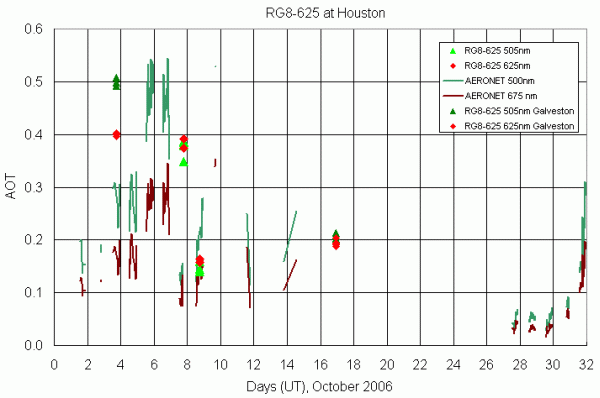 |
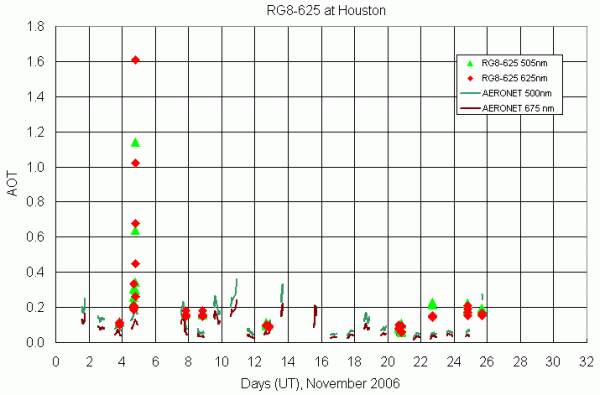 |